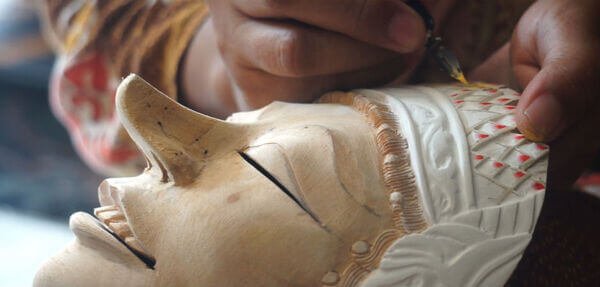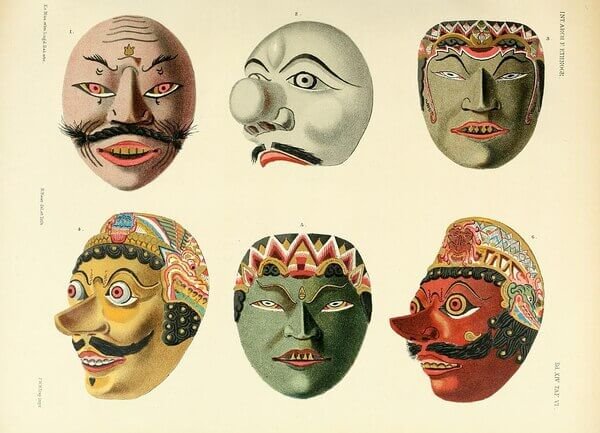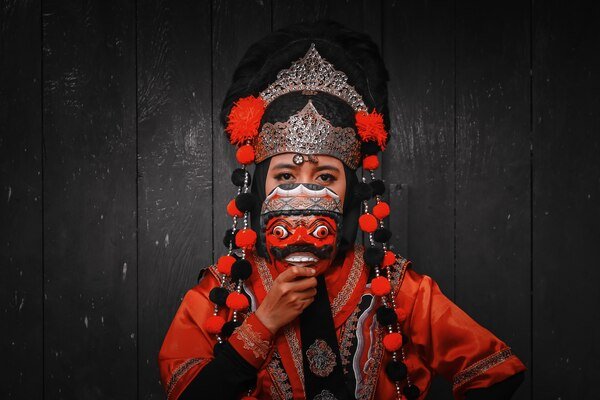Wood masks in Indonesia are traditional hand-carved wooden masks that are used in various cultural and spiritual rituals and ceremonies. These masks are often richly decorated and come in a wide range of styles, designs, and sizes, reflecting the diverse cultural traditions of the many islands and ethnic groups in Indonesia.
In some regions, wooden masks are used in dances and theatrical performances, while in others they are believed to have spiritual or supernatural powers and are used to ward off evil spirits or bring good luck. Some masks are used in healing rituals, where they are believed to have the power to heal various ailments.
There is a wide range of wooden masks found in Indonesia, reflecting the diversity of the country's cultures and traditions. Here are some of the most commonly encountered types of wooden masks in Indonesia:
These are just a few examples of the many different types of wooden masks (“Topeng” in Indonesian language) found in the archipelago. The exact styles and designs of the masks can vary greatly from region to region, reflecting the diverse cultural traditions of the many islands and ethnic groups in the country. Hence, we just can’t list them all! Still, below a few significant examples:
Javanese mask:
Javanese wooden masks, also known as "Jawa topeng," are an important part of Javanese traditional dance performances in Indonesia. These masks are carved out of wood and are used to depict characters or spirits in the performances. Javanese masks can range in style and expression, from frightening or angry to joyful or comedic.
Some masks are adorned with intricate carvings, embellishments, and other decorative elements that reflect the creativity and skill of the Javanese craftspeople who make them.
Javanese wooden masks have a long history and cultural significance in Indonesia, and they are often used in religious ceremonies and festivals. In addition to their use in traditional dance performances, Javanese masks are also highly prized as works of art and are collected by art enthusiasts around the world.
Cirebonese mask:
It is a local indigenous art form of Cirebon in Java, including Indramayu and Jatibarang, West Java and Brebes, Central Java. It is called mask dance because the dancers use masks when dancing. There is a lot of variety in Javanese mask dance, both in terms of the dance style and the stories to be conveyed
Balinese masks:
In numerous processions, including grand temple rituals and celebrations of individual milestones like marriages or funeral rites, sacred masks are worn.
The use and significance of Balinese masks, however, follow as dance and shows are increasingly used for non-spiritual purposes. The masks are worn during social or entertainment dances to represent or give the impression of particular characters from the narrative.
Dayak masks:
The Dayak are a tribe of Borneo island in Indonesia, and masks are of course part of their culture. The Hudoq is a component of a ritual to keep pests out of fields during planting season and guarantee a bountiful harvest. The Hudoqs attempt to frighten the audience, who are said to represent pest-spirits, while donning colourful masks and costumes made of banana leaves.
As a result, people preferred the gorier masks. When the Hudoq moved, heavy bronze earrings would dangle from its ears, adding additional motion and occasionally noise. They were fastened to the face by a biting stick and wore with a wicker cap stuffed with hornbill feathers (which is absent in this instance). They perform group dances while drums play.
Shamans may also use hudoqs in rituals of healing to frighten away the illness's origin.
From one generation to another
The creation of wooden masks in Indonesia is a traditional craft that is passed down from generation to generation. Each mask is typically hand-carved from a single piece of wood and can take weeks or even months to complete. The intricate designs and detailed carvings on the masks often feature local flora and fauna, as well as abstract patterns and symbols that are specific to the cultural traditions of the region where the mask was made.
Wooden masks from Indonesia are highly sought after by collectors and art enthusiasts, and they can be found in museums, galleries, and private collections all over the world. The art of creating these masks is still alive today, with many local artists and craftsmen continuing to create these beautiful and unique works of art.






